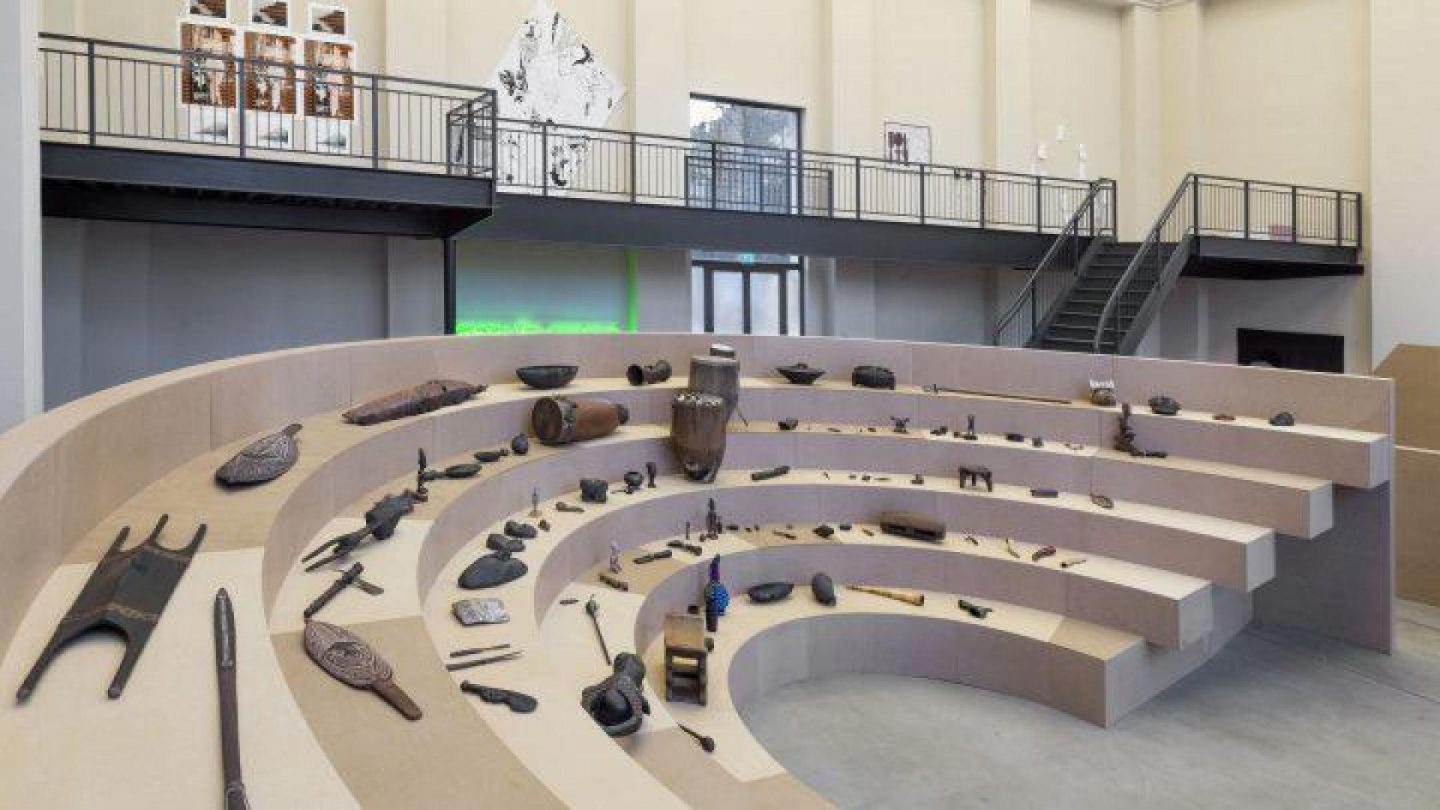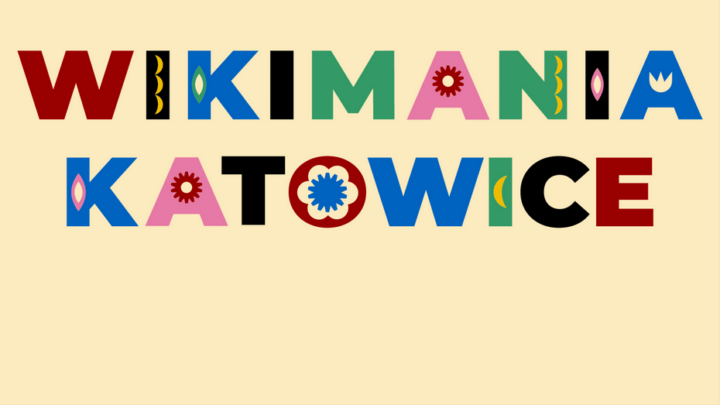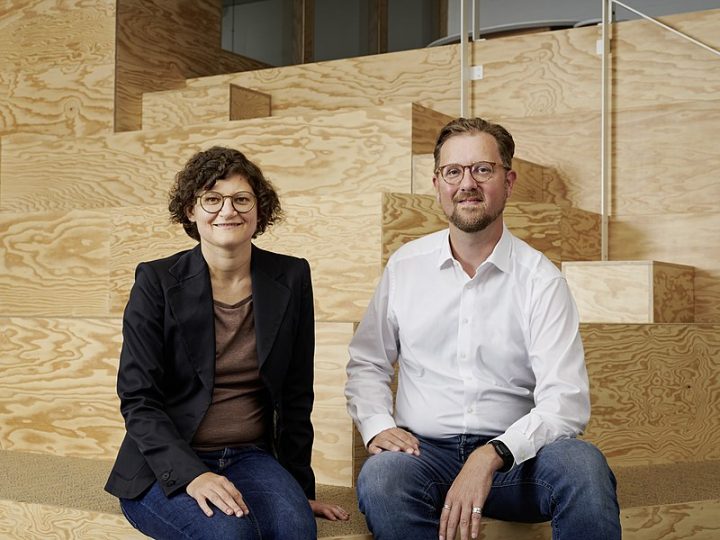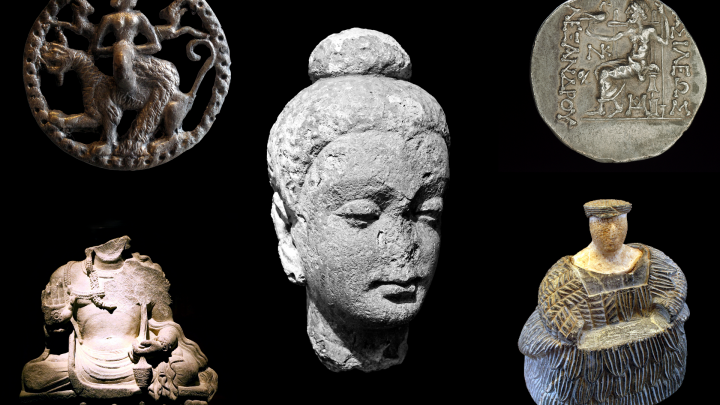Open and Equitable – Questions on how to handle digital copies in collections from colonial contexts (Part IV)

Isabel Fischer, Anna Brus, Lisa Marei Schmidt, Michael Höppe
3. August 2022
As an introduction, could you briefly introduce yourselves. Please tell us how you came to the project “Digitisation of the Ethnographica Collection of Karl Schmidt-Rottluff” and your role in it, as well as in the exhibition “Whose Expression”.
Lisa Marei Schmidt: I’ve been the director of the Brücke Museum since October 2017 and in this function I’m ultimately also responsible for the estate of the artist Karl Schmidt-Rottluff, who initiated the museum. The reappraisal of the collection of works from colonial contexts was a particular concern of mine from the very beginning. And it was very clear to me that we would have to proceed completely differently with digitisation of this collection compared to digitisation of works of art from classical modernism, our core subject. Above all, this meant decentering and questioning the knowledge hierarchy.
Isabel Fischer: I was responsible for coordinating the project. This included coordination of and communication with all project participants, the development and adaptation of work flows, as well as monitoring the timeline and financial plan, and public relations. I already had experience with collection-related digitisation projects at the Brücke Museum, but this was the most challenging and exciting one by far, not least because it made you constantly question yourself.
Anna Brus: I had already worked on colonial collections and, as an art historian, found the connection between this collection and the Brücke artists’ group exciting. This project was the coming together of not only two museum histories but also two art forms usually kept separate – and I was interested in what we could learn about coloniality, art and society when we bring these two areas together.
In the project, I was mainly responsible for working with the network. My task was to contextualise the object-subjects in the collection in consultation with various experts, to assign them a region of origin, a period of manufacture and possible functions.
Michael Höppe: My task in the project was data curation – mapping and integrating the data into Wikimedia Commons.
Questions
Tell us something about the digitisation of Karl Schmidt-Rottluff’s Ethnographic collection. How did it come about? What was the aim of publishing a large part of the digitised material on Wikimedia Commons? What hopes and concerns did you have going into the project?
Lisa Marei Schmidt: For me, the focus was on making this collection transparent, on showing what we have in storage in our depot. Making these works visible also opens the door to possible restitution.
Isabel Fischer: The aim of the project was to enable the widest possible (international) participation in the collection. Ideally, participation should take place on two levels: Firstly, in the process of basic indexing, which took place in close cooperation with experts from the communities of origin and decolonial actors and, secondly, by choosing Wikimedia Commons as a publication platform, where data is not fixed but can be expanded by others. The hope was to make the data accessible, usable and editable for all interested parties. One concern was that the short project duration of only one year would not be sufficient. Another concern was that we wouldn’t be able to engage enough people, especially experts from communities of origin, to participate in the project.
What other challenges arose during digitisation and publication, for example in relation to establishing provenance/origin, digitisation or even the description of the objects (metadata)?
Anna Brus: The goal was to categorise the objects, but existing knowledge about the origins of colonial-era objects is usually quite limited. It’s often knowledge produced by researchers falling back on the same sources, referring to each other again and again, or simply copying from each other. Unfortunately, this thin source material situation also affected my own work for the project. In the face of such vague knowledge, you’re faced with the decision to either write almost nothing at all or to choose rather shaky knowledge. Because even shaky knowledge can help to lay a trail that makes it easier to find objects if that vague information matches someone’s search criteria.
Another challenge concerned our choice of forms of knowledge and the platforms on which we make knowledge accessible. We needed to ask ourselves whether platforms like Wikimedia Commons really are so easily accessible to all people, everywhere. Also, Wikimedia Commons is still essentially a knowledge infrastructure of the global north. The question remains, how could the data also be managed by the so-called communities of origin?
Even more fundamentally, there’s also the problem of a clash of knowledge traditions. The classifications of the European knowledge tradition are not necessarily congruent with the classifications used by groups who still, to this day, feel responsible for these objects, where it’s often also about emotional knowledge and locally specific forms of memory. Last but not least, problematic “tribal” classifications and the colonial violence of collection practices are also implicitly inscribed in European “ethnological” representations.
Michael Höppe: One challenge in my field of work was the use of widely-used controlled vocabularies. Special (technical) terms had to be generalised (e.g. for the material of an object) or terms from other contexts had to be used. The locations of origin of the works could not always be adequately represented. For example, we had difficulty when an object’s origin couldn’t be ascribed to a fixed location but instead to a population group spread over different regions (the solution here was, for example, to list their origin as a specific language area).
Isabel Fischer: During digitisation, the challenge was to obtain digital surrogates that reproduce all the characteristics of the work. On the one hand, this meant we took multiple photographs from different angles for each work. On the other hand, a technique had to be found that would capture the works equally sharp on all image planes. Another challenge was to remain flexible in the schedule and workflow – to adjust again and again, for example if certain interviewees were unavailable or if further questions arose during the basic evaluation.
In Open and Equitable! Questions on Handling Digitised Objects from Collections from Colonial Contexts (Part 2), we asked Juma Ondeng, project partner among others in the IIP, whether there were objects (and therefore digital surrogates) that should not be publicly shared. Have you published all the digital surrogates of the Ethnographic collection online? If not, which ones did you decide not to share and how did you make these decisions?
Anna Brus: A small part of the collection has not been published, consisting of Mesoamerican burial objects that are otherwise visible in many museum and private collections. Discussions with experts from the Oaxaca community, who can be understood as descendants of these cultures, suggested that we treat these collections with special reverence. They are very personal things that were given to the deceased on their last journey. Determining what constitutes “sensitive objects” is not necessarily at our discretion and cannot be defined across the board.
This community, by the way, would generally prefer to be in control of the sharing of images of indigenous objects or subject-objects from Abya Yala. Here you can also see the problems that come with the absolute transparency and release of image rights via Wikimedia Commons.
What responsibilities do you think museums could/should have towards the original owners of the objects in their collections?
Anna Brus: This form of cooperation with communities is usually only temporary and, even if it’s paid, is a form of knowledge extraction and also emotional work. In my opinion, if museums are already building contacts, they should make them long-term and think about long-term cooperation and restitution.
Basically, digitisation would also have to involve building infrastructure in the location of the communities of origin concerned. For example, in Papua New Guinea, where a large part of Karl Schmidt-Rottluff’s collection comes from, there are only very limited possibilities to use a public computer. Downloading large datasets to a mobile phone costs far too much data volume. So de facto transparency sometimes goes nowhere here…
Can you say something more about the effects of the digitisation project at the Brücke Museum? How was it perceived internally? How were the exhibitions received by the public?
Lisa Marei Schmidt: In 2021, the Brücke Museum set to addressing its colonial heritage in several projects. In addition to the digitisation project, the two exhibitions “Whose Expression?” and “Transition Exhibition” as well as an internal awareness-raising and training programme also dealt with this complex of topics. “Whose Expression” questioned the works of the Brücke artists against the background of colonialism. And in “Transition Exhibition”, the ethnographic collection of works from a colonial context from the estate of the artist Karl Schmidt-Rottluff was exhibited in its entirety for the first time and critically questioned by contemporary artistic positions. It was especially nice for all the staff to see the synergy between the different projects. Results from the digitisation project flowed into the exhibition and vice versa. And I also had the impression that a large part of the audience was very taken with the exhibitions and the critical approaches. The projects received a lot of media attention and were discussed intensively. Among them were critical voices that accused us of exaggerated “political correctness” and defaming the Brücke artists. Ultimately, however, we hope that the projects have awakened many people’s awareness of the colonial contexts that are still with us today.
Isabel Fischer: The digitisation project was very positively received both internally and externally. It was presented at several conferences and met with great interest. Especially the decisions to work with experts from the communities of origin and to publish the data via Wikimedia Commons, relinquishing institutional sovereignty of interpretation, received positive feedback.
What happens next after the digitisation project and the special exhibition “Whose Expression? The Artists of the Bridge in a Colonial Context”? Will the exchange with experts from the societies of origin continue?
Lisa Marei Schmidt: I was very aware that, whilst the exhibitions would end on 20th March 2022, the digitisation project will keep us busy for the next few years, especially with regard to researching provenance of the works. Fortunately, our researcher Anna Brus has received a grant from the Deutsches Zentrum für Kulturgutverluste (the German Centre for the Loss of Cultural Property) to research the provenance of these and other collections of the Brücke artists and their circle. This means that the exchange with experts from the communities of origin, which she has painstakingly built up and which is based on trust, can continue.
Isabel Fischer: The Brücke Museum will continue to monitor the Wikimedia Commons project page. There are also plans to transfer the collection metadata to Wikidata and link it to the Wikimedia Commons media files.
What are your personal lessons and experiences from the project?
Lisa Marei Schmidt: Maybe having the courage to ask questions publicly and not to use one’s lack of expertise as an excuse for not being able to start, but to understand that asking questions and opening up to other answers and perspectives is part of the process. And that the cooperation with experts must be understood as long-term and, above all, mutually appreciative cooperation that is sustainable and also rewarded.
Isabel Fischer: My biggest personal lesson is the willingness to be as flexible as possible. Unlike other digitisation projects, this one required constant questioning of one’s own work processes and planning. The schedule and individual work packages had to be rethought and adapted again and again. This also meant letting go of the idea that knowledge about the works should be generated and published as quickly as possible.
Anna Brus: We can no longer research “about others”. This is something we should only do through exchange. In the cooperation with different groups, there were always surprising results for me that I could not have foreseen. That’s why it’s important to keep making the effort to cooperate – and to remain open to all kinds of developments.
Are there plans to share the experiences/learnings gathered through the project in a larger national and international network of museums and other institutions, perhaps to jointly develop sustainable solutions?
Isabel Fischer: In cooperation with digiS: Research and Competence Center Digitalization Berlin, the Brücke Museum plans to publish a report on its experiences in order to share the prerequisites and learnings of such a project with other institutions.
What role do you think the Wikimedia projects could play in the digitisation of cultural heritage, especially collections from colonial contexts, such as Karl Schmidt-Rottluff’s Ethnographic collection?
Isabel Fischer: We were very happy that digiS put us in touch with Wikimedia Deutschland and that we had a close exchange even before the first data was published. We were also particularly pleased with the practical support (for example in the form of advice on the use of templates from Wikimedia community member Raimond Spekking). Many cultural institutions probably don’t even think about the fact that they could also publish their data via Wikimedia Commons or Wikidata. For this reason, it would make sense for Wikimedia to do even more information and public relations work, and perhaps also to contact cultural institutions directly. It would also be helpful to mobilise the wiki community more to make them aware of such projects and publications.
How would policies/laws/requirements need to change to support more museums in this work and similar projects like yours?
Lisa Marei Schmidt: The intensive reappraisal of such a collection, especially with regard to provenance, is only possible through longer-term third-party funding.
Anna Brus: First of all, it’s about supporting museums financially, or raising awareness in the first place that collections from a colonial context bring with them a special social responsibility. But this question is much more fundamental, because we cannot “decolonise” ourselves alone. It is a long process to recognise the coloniality of our epistemes, our object categories and hierarchisations, and to detach collections from them. In order to be able to work meaningfully in this field, we are also dependent on cooperation with colleagues from the so-called “Global South”. Despite numerous transnational funding programmes, there are still national borders, lack of recognition of academic qualifications or visa regulations that make such cooperation difficult.
Interview & Editors Sabine Müller, Lucy Patterson, Claudia Bergmann
Other parts of this blog series:




